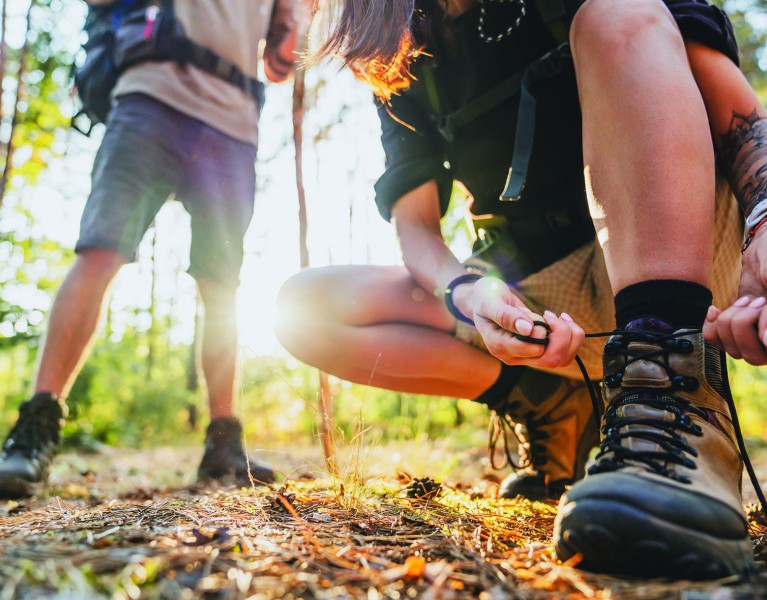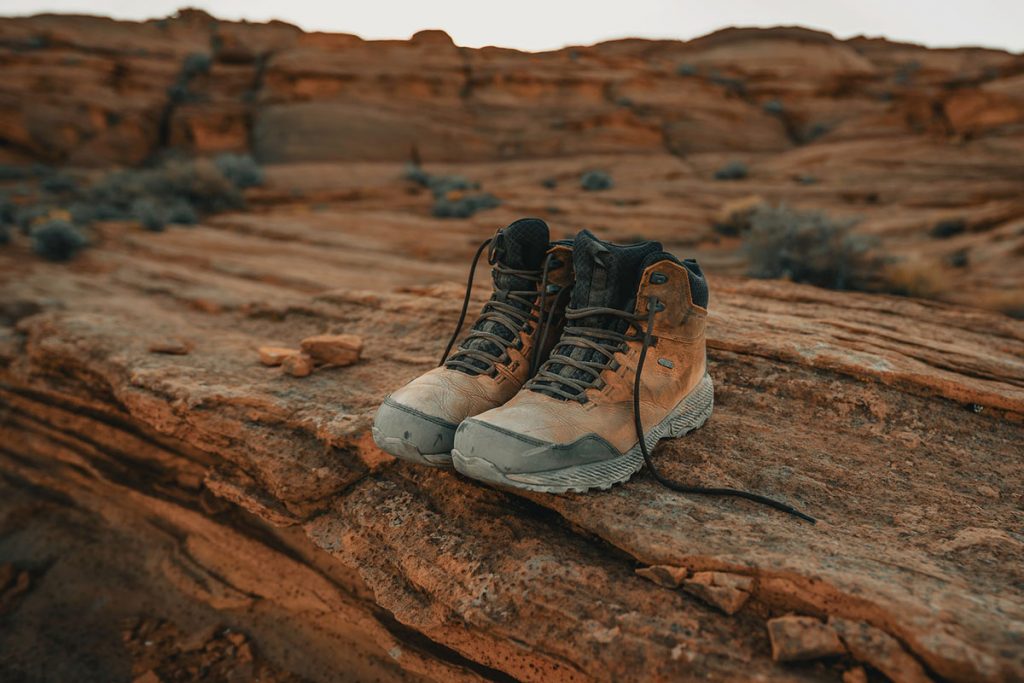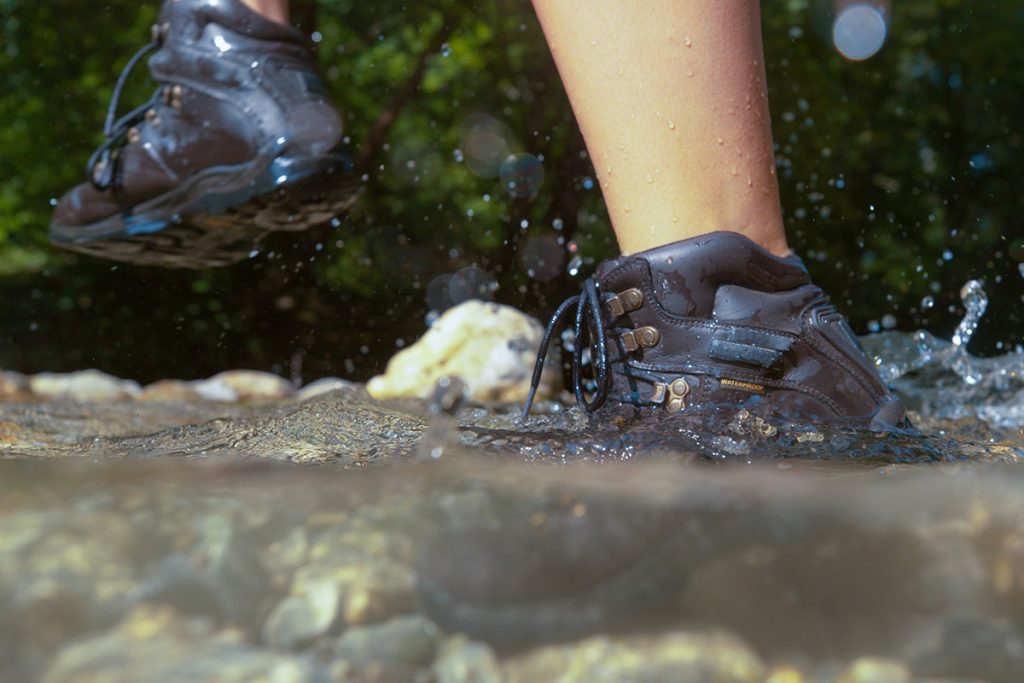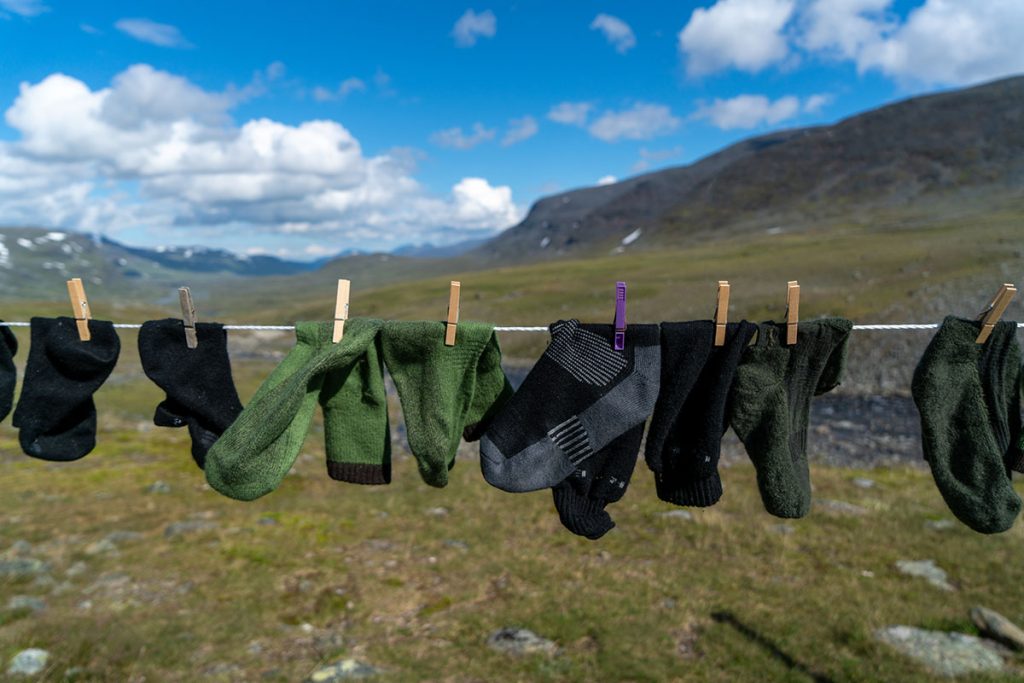
How to Choose the Best Hiking Shoes and Boots
Table of Contents [Show]
A key item that should be taken with plenty of consideration when planning your grand outdoor adventure is what to wear on your feet. Regular tennis shoes or heavy, poorly constructed boots can cause unwanted damage to your precious feet. One twisted ankle, a few blisters, wet socks, or swollen feet from being too compact will quickly take your journey, figuratively, downhill.
With so many choices for hiking shoes and boots out there, it’s easy to feel overwhelmed and unsure where to start when choosing the right pair for your feet. Some things to take into consideration are the different types, the right components and the correct fit that will make you feel comfortable in your new hiking boots. With tremendous strides in technology, hiking shoes and boots have become incredibly advanced in recent years. The benefit of having so many options allows you the chance to find that perfect pair. Before you start your search, let’s take a look at how to choose the best hiking shoes and boots.

What to Ask When Picking the Perfect Pair?
A good place to start when choosing the right hiking shoes or boots is to ask some simple, yet important questions of yourself. Here are a few that will help guide you to the perfect pair:
1. What is your intended use?
If you are going to be hiking regularly, then a pair of well-made hiking shoes or boots is important to find. Many brands are expensive, but they will most likely last for years, and include special warranties. If your intention is to go for trail runs then you’ll want to find a solid pair of trail runners. If you’re taking a multi-day backpacking adventure, a strong pair of backpacking boots will benefit you as they are designed to protect your feet when carrying heavy loads.
2. What type of weather will you be hiking in?
If you’re going to be hiking mostly in hot summer temperatures, search for a lightweight, well-ventilated shoe that has plenty of mesh at the toes and sides. This will allow your feet to “breathe” in warm weather conditions. If you hike mainly in cold or damp weather you’ll want to find a pair of solid waterproof boots. These will come with an added layer of protection on the outer layer to keep out moisture and are built with great traction. This is ideal for hiking in rain or cool weather when you may be traversing through mud or a bit of snow. Many of these boots include ‘GTX’ in their name, which stands for Gore-Tex technology (just as in rain jacket material).
3. What type of material suits you?
Synthetic materials consist of nylon or polyester and are usually easy to break in, feel light and dry quickly. The only downside to synthetic material is that it is typically less water-resistant. Leather is incredibly durable and ideal for long hikes when you’ll be traveling through wet terrain. Although leather is durable and water-resistant, it’s also heavy and provides less air flow compared to synthetic. Split-grain leather is usually made with half leather and half synthetic materials. This type of hiking boot fits right in the middle of the two, providing quality air flow while also protecting your feet from getting wet.
4. Where are you buying?
Some of the best places to find high quality hiking boots are from local outfitters who have plenty of experience themselves with different boots. By physically visiting a retailer, you are able to try on and test out the shoe for yourself. This is a great way to find the ideal type of boot or shoe for your adventures. Be sure to try them on, tie them as you would on your hike, and walk around for a couple of minutes. And don’t forget to ask questions! If you’re shopping online for shoes or boots, be sure to research reputable brands and order them many weeks before your trip so you have plenty of time to test them out and wear them in.

Boots vs Shoes
If your plan is to hike nearby trails multiple days a week and carry no more than 30 lbs, then hiking shoes may be for you. On the other hand, if you plan to take multi-day journeys while carrying more than 30 lbs, then hiking boots will be your best bet. Boots provide more ankle support, have more overall structure for your feet and will help you while carrying heavy loads. Some people also prefer shoes because they are convenient and a bit more practical to wear into town for everyday use. Ultimately it’s up to you and your personal preference when choosing whether to wear hiking shoes or boots.
Break your Shoes and Boots In
Many shoes and boots require a certain time period to become comfortably snug around your feet. It’s a good idea to go on a few short (one or two mile) hikes so you have a basic understanding as to what they feel like. This also gives the boots time to form to your feet, and after a few days of wearing them they should be ready for much longer hikes. If you are planning a multiple day backpacking journey and have purchased a pair of heavy-duty leather boots, it will take a bit longer to break them in. Wear them for at least three weeks before your trip to be prepared.
Socks are Important

Socks are an important component to keeping your feet happy while on a hike. Some socks are much thicker than others, especially ones that are meant to keep your feet warm. You’ll want to take this into consideration when trying on your boots because if you try them on with a thin pair of cotton socks and they fit snug around your feet, it may be uncomfortable when wearing a thick pair of wool socks.
It’s a good idea to wear the socks that you think you’ll be wearing a lot on your hikes when trying on a new pair of boots. Also, try to avoid wearing cotton socks, as cotton retains moisture and will increase the chances of blisters. Instead, wear socks made with synthetic material or merino wool. These socks are moisture wicking, dry quickly when wet and help keep your feet dry when sweating.
Hiking Boot Maintenance
After a long hike it’s crucial to take care of your boots, just like any other gear you use on your outdoor adventures. Hiking shoes or boots need to be kept in tip top shape in order to support you and keep your feet in the best shape possible.
Hike with Happy Feet
Choosing the right hiking shoes or boots doesn’t have to be complicated. Asking yourself a few questions, writing a list of pros and cons and trying on a variety of styles will help you find the perfect pair. Whether you’re going on a two-mile hike, or taking an overnight backpacking adventure, your feet will thank you when you slip them into the right boots. So, tie your laces tight, breathe in the fresh air and happy trails!
Featured image by: InsideCreativeHouse.


